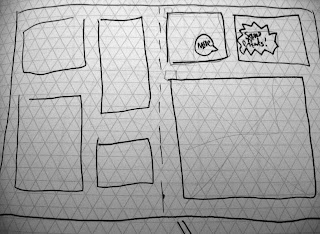About the opener:
My goal with the concept of "Dr. Hydrogen's Atomic Comic Hour" is to have a show that appeals to fans of the comic book industry - whom range from the young to the old. I came up with the idea of superhero/host type personality Dr. Hydrogen as a guide of sorts for both long-time fans and newcomers to the culture. Every week, Dr. Hydrogen leads viewers through numerous aspects of the comic book industry, whether it be current trends, looks behind the scenes, or tips from the artists.
I chose music that I felt evoked the feel of comic book drama, similar to the old-school tv show themes.

















































